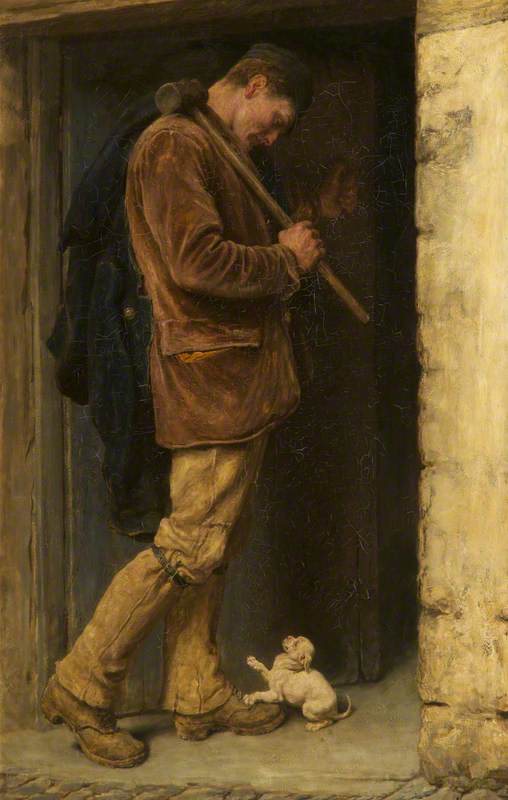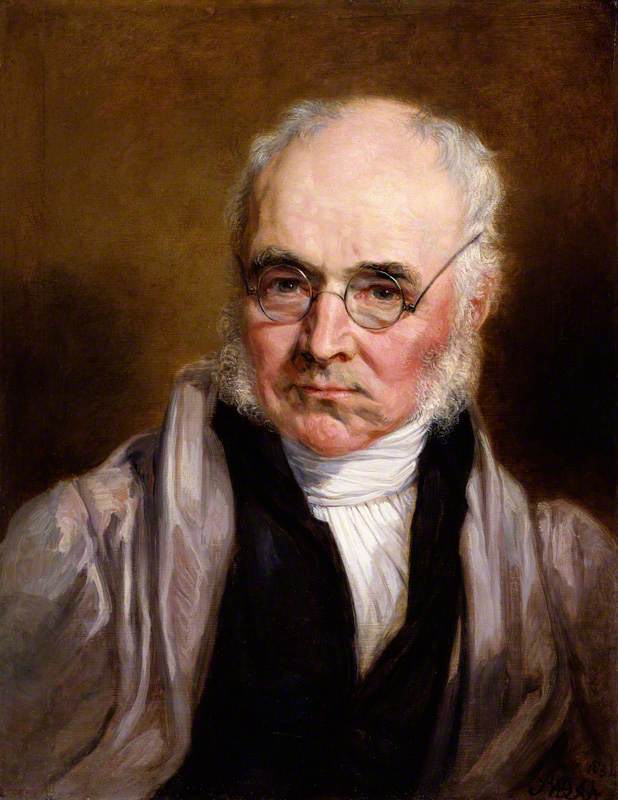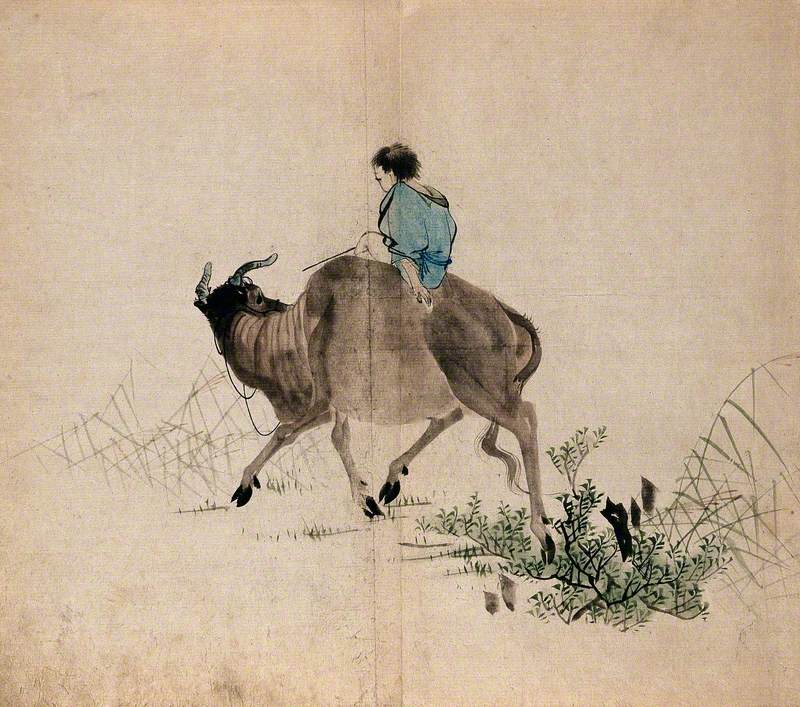In 2018, Salford Museum & Art Gallery took part in the Royal Academy of Arts 250th Anniversary. This was a nationwide event celebrating the work and talents of Royal Academicians (RAs) across the country. As part of the celebrations, Salford curated exhibitions which highlighted RAs within the collections.
RAs are a group of world-leading artists and architects elected by their peers and are based at the Royal Academy in London. Salford holds the work of many RAs in the collections including that of Elizabeth Frink, David Hockney, L. S. Lowry and Briton Riviere. Salford was delighted to use this opportunity to display one of its star pieces from the collection, The Welcome, an oil painting by Briton Riviere RA, or so was the plan…
Briton Riviere was a British artist who devoted much of his life to painting animals – many of his paintings show strong connections between man and beast. He had begun drawing animals as a boy at the London Zoological Gardens and would later take a studio close to the zoo to provide him with access to exotic species.
Having gained much of his art training from his father, William, who taught art at the University of Oxford, Riviere first exhibited at the Royal Academy in 1857. He was elected an Associate in 1878, and a Royal Academician in 1881. His earlier works shown were of a classical style, but by the time he became a regular contributor at the Academy, he had begun concentrating on animal subjects which he dedicated the rest of his career to.
He became one of the most esteemed animal painters of his time, depicting animals with human emotions and personalities, and making subtle connections in his art between the human mind and body with those of the animal. Riviere believed that he too should have a connection with an animal to paint it, saying 'you can never paint a dog unless you are fond of it'. His dedication to finding the true essence of an animal also applied to wild animals. In the 1897 Chums Boys Annual ('How I Paint Animals'), he explained: 'the only way to paint wild animals is to gradually accumulate a large number of studies and great knowledge of the animal itself… I paint from dead animals as well as from live ones… I have done a great deal of work in the dissecting rooms at the Zoological Gardens from time to time'.
In The Welcome, the connection between man and dog is clear. As he returns home, the man is met by his dog who places a paw on his boot. The dog gazes at his owner, who in turn gazes back.
But unfortunately, the work could not be part of the RA celebrations. All artwork considered for display first has to be condition checked. This is a process where a curator or conservator examines the artwork closely to look for signs of deterioration or damage and assess whether the work is in a good enough condition to display.
Artworks are subjected to many things that can harm them, including heat, humidity or UV levels from light. These are closely monitored within gallery spaces and actions are taken to control them to a sufficient level. But sometimes artworks and objects can not be put on public display as the exposure to these risks will add to the decline of their condition, making them too fragile. It was devasting to discover that The Welcome was in too poor a condition to be used.
The work was further assessed by a conservator. One third of the painting was affected by micro flaking, where tiny flakes of paint become detached. There were drying cracks which could have signified an inherent flaw in the paint layer. The canvas tension was poor, and the varnish layer was discoloured with a lot of surface dust.
Detail of damage to 'The Welcome'
The work needed to make the painting stable enough for display would cost around £2,000. The 'Display, Restore, Enjoy' fundraising initiative was launched, where visitors are encouraged to make a donation instead of paying an entrance fee. All the money raised goes towards displaying more from the collection, restoring treasures from the collection, and enabling the enjoyment of exhibitions, events and learning activities for everyone.
The donations collected during the RA celebrations were designated to restoring the painting and the community of Salford saved the day! Over time, enough money was raised to allow the conservator to begin her work. The loose and flaking paint was consolidated by feeding in adhesive and applying heat to encourage it back down. The ground layer of the painting wasn't very absorbent, and the paint was very oily which could explain why the paint was flaking. Expansion keys in the canvas were replaced and secured, the canvas was re-tensioned and the whole painting had a surface clean.
'The Welcome' at the conservator's studio showing the progress of surface cleaning
Salford is delighted to welcome home The Welcome for the current exhibition 'Exploring the Collection: Animals'. It arrived back just in time for the opening where it takes pride of place on the title wall and is the flagship image for marketing. The painting glows on the wall and captivates the viewer. It is amazing to see the difference in the work. New discoveries have been made – for example, the inside of the man's pocket shows as orange, and more detail in the shadows of the doorway can be seen.
'The Welcome', currently on display
The painting was used as the main inspiration for the whole exhibition. Briton Riviere was renowned for capturing the human and animal relationship in his work, and items from the collections to explore these relationships have been curated for the show. From working and domestic animals, to sporting animals and using their parts, the exhibition brings together an eclectic mix of fine and decorative art, toys and games, social history and some taxidermy, making it an intrigue for all ages!
'Exploring the Collection: Animals' gallery
'Exploring the Collection: Animals' is on at Salford Museum & Art Gallery until 28th April 2024. For visiting information, see the Salford Museum & Art Gallery website.
Amy Brunn, Exhibitions Manager at Salford Museum & Art Gallery




















